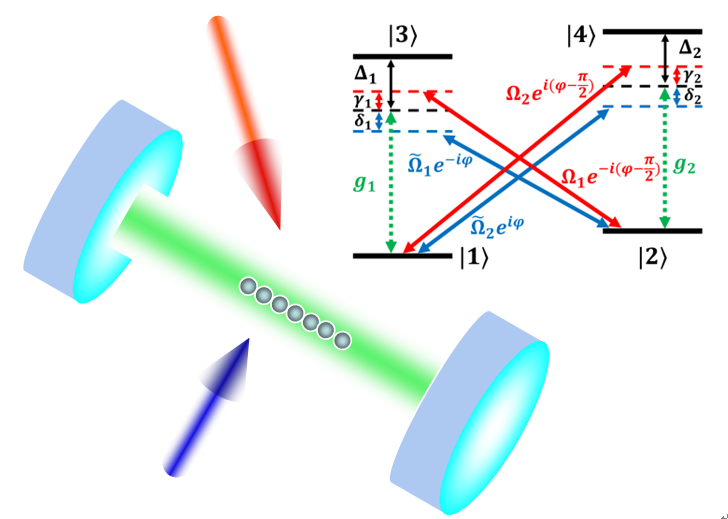Spin-squeezed states, novel collective states defined by atomic collective spin, have been proved to play an important role in increasing the precision of measurement. They have many applications in exploring fundamental physics and developing new techniques such as frequency standards and detection of gravitational wave. The preparation of such collective atomic states with high-degree squeezing in real systems is one of the main goal for the experimentalist.
Researchers from Key Lab of Quantum Information at University of Science and Technology of China (USTC) of Chinese Academy of Sciences have proposed a new scheme to implement two-axis spin-squeezed states of cold atoms with the help of phase-locked laser coupling. This scheme has the potential to achieve significantly higher squeezing in current setup than existing schemes. The work has been published in
Physical Review Letters.
In this new scheme, researchers focused on generating spin-squeezed states in the hybrid atom-cavity system using two-axis counter-twisting (TACT). In principle, the measurement precision based on such TACT states scales as 1/N (known as Heisenberg limit in quantum metrology), with N being the number of particles in the system. This makes it more attractive compared with the usual one-axis twisting (OAT) used in current experimental system, which increases the measurement precision by 1/N
1/2.
The implementation of such novel scheme requires only phase-locked atom-laser coupling with large detunings. The current method is also robust against dissipation caused by cavity loss and atomic spontaneous. Through detailed numerical calculations, researchers verified that up to -47.4dB squeezing can be achieved using their scheme, which is significantly higher than current schemes based on OAT using the same system size.
The proposed scheme can also be generalized to implement two-mode spin-squeezed states, which can be used to “detect two observables simultaneously even when they do not commute.” This may enable applications in entanglement demonstration, quantum teleportation, etc.
This work is supported by National Natural Science Foundation of China, the Chinese Academy of Sciences and Synergetic Innovation Center of Quantum Information and Quantum Physics.

Figure Atomic level structures and laser couples for the realization of TACT interaction (Image by ZHOU Xiangfa)
Dr. ZHANG Yongchang is the first author of the paper. This work is supported from National Natural Science Foundation of China, The Chinese Academy of Sciences and Synergetic Innovation Center of Quantum Information and Quantum Physics.
Paper link: http://journals.aps.org/prl/abstract/10.1103/PhysRevLett.118.083604
Contact: ZHOU Zhengwei zwzhou@ustcnet.
ZHOU Xiangfa xfzhou@ustcnet.